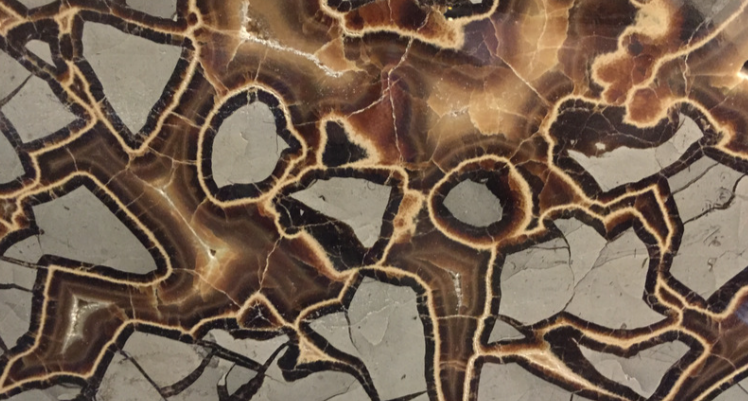
Septarian: Earth's Dragon Stone
Share
If ever there existed a stone on Earth that evoked visions of fantastical worlds, then that stone must be septarian. In fact, septarian is also known by the names “dragon stone” and “dragon egg,” monikers that I’m sure surprise no one. Why, just look at it! With its patterns of cracks and fissures, this rock looks as if a baby dragon is about to burst forth from it at any moment.
Septarian may look like it was transported from another dimension, but there is no doubt that it has formed naturally on this Earth. (Which is yet another indication that our planet is far more fantastical than we usually give it credit for!) Let’s take a look at septarian’s formation and the role it plays in our ancient geological narrative.

First, what exactly is septarian? Some refer to the stone simply as a type of calcite, but there is more to it than that. Septarian is usually a combination of calcite and other minerals, such as aragonite and limestone. It can also contain clay minerals, gypsum, or barite. It is famous for its characteristic network of cracking patterns that offer the stone the appearance of a dragon egg cracking open. When the piece is polished, this striking appearance is further amplified.
Septarian nodules are believed to form via a combination of sedimentation, mineralization, and contraction. The beginning of this story involves the collection of sediment around a nucleus, which is normally a fossilized shell or another kind of organic material. Then, as time passes, various groundwater minerals filter into the sediment and accumulate. These minerals crystallize and harden, forming concentric layers around the nucleus and creating what is called a “concretion.”
More time passes. Due to stress from internal and external forces, the nodule experiences compaction, which is the process by which minerals are pressed together. The space between individual particles reduces. The inside of the nodule develops fractures known as “septaria,” which often radiate from the center outward. Thus, a beautiful system of angular patterns is born. More groundwater then brings more minerals (like calcite, aragonite, or barite) to fill the cracks and crystallize, preserving the nodule’s network of septaria for eons to come.

Like many stones with sedimentary origins, septarian commonly forms in areas that were once ancient seabeds. Nodules are found in sedimentary rocks like limestone, shale, or mudstone. Locations all over the world are home to septarian deposits, with specimens being mined in Morocco, Madagascar, New Zealand, England, Canada, the United States, and Germany. Each geological location contributes its own special characteristics to the stone. But even when originating from the same locale, the process by which septarian forms guarantees that every specimen is unique.
Septarian’s birthplace in ancient sea beds also means the stone is a valuable tool in scientific endeavors. In geology, nodules offer insights into the geological processes that took place millions of years ago. Scientists can use septarian to catch glimpses of ancient marine environments. In paleontology, the organic nuclei of septarian nodules can contain well-preserved fossils, which help scientists learn about ancient life that existed in the area. Paleontologists can also study nodules to glean information about the networks of fauna and flora in past ecosystems.

Metaphysically, septarian engages the root chakra. It is a deeply grounding stone that enhances our connection to the Earth. When I meditate with septarian, I like to picture myself standing on the shores of ancient oceans. I feel the cool sand on the soles of my feet, the foamy water lapping gently at my ankles. I become rooted in the mystery of the pre-human world. To me, it makes perfect sense that septarian would make us think of magical realms, like those that would involve dragons. The ancient Earth, which existed long before humans, is nothing if not magical.
~~~
by Amber N. 2025
